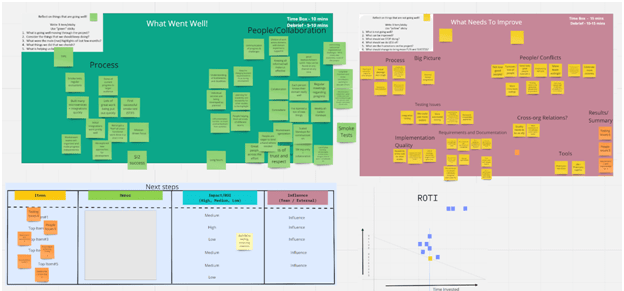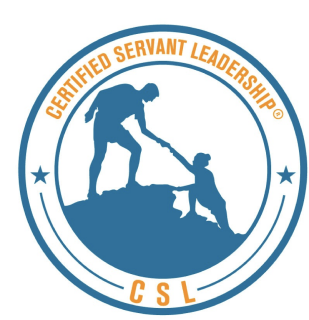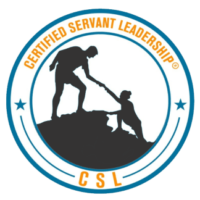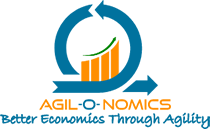
As a self-proclaimed Scrum Master whisperer, I’ve chatted and worked with more development teams than I can count. As a result, I’ve experienced a wide diversity of Product Owners. From the good, the bad, to the downright ugly – I’ve seen it all.
One thing is crystal clear, a good product owner can turn a decent project into a masterpiece. Meanwhile, a less than average product owner can sink a project faster than the Titanic.
So, what sets the two apart?
The secret ingredient to being a successful product owner is an innate ability to understand people’s needs. Whether it’s your stakeholders, customers, or team members – a good product owner knows what they need and makes sure they have it. But, how do they do it?
By displaying and living the attributes described below:
- Easily Accessible to teams – Empowering the teams by being present and available
- Ability to see the big picture – Envisioning a holistic view of the Product’s goals to drive outcomes
- Collaborative team player – A dedicated team player, fostering a collaborative environment to drive success
- Setting high expectations – Setting high standards to achieve ambitious goals and deliverables
- Prioritizing / Negotiating and building consensus – Prioritizing tasks, negotiating with stakeholders, and building consensus for successful project completion
- Storytelling / communicating effectively – Mastering the art of storytelling and communicating complex ideas in a simple and effective manner
- Motivating and inspiring – Inspiring and motivating team members to work towards a common goal
- Decisive and willing to make hard decisions – Making tough decisions with confidence and conviction for the project’s benefit
- Taking economic view to balance business with technology – Balancing business and technology by taking an economic view of project decisions
- Building good relationships with stakeholders – Building strong relationships and maintaining a good rapport for long-term success
Let’s look at these closely
1. Be Available: A Key Trait of Good Product Owners
 In the fast-paced world of Scrum teams, having an available product owner can make all the difference between project success and failure. Your team needs you to answer their questions, clarify their expectations, and provide support whenever they need it
In the fast-paced world of Scrum teams, having an available product owner can make all the difference between project success and failure. Your team needs you to answer their questions, clarify their expectations, and provide support whenever they need it
To build a collaborative and productive relationship with your team, you need to be part of it. If you work in an office, sit with the team, and if you’re remote, participate in their Chat channels. Attend daily scrums, sprint planning, reviews, and retrospectives to stay up-to-date and provide valuable input
Remember, as a product owner, you’re the expert on what users want and value. To show that you truly understand the product, you need to know it inside-out, not just by writing user stories, but by experiencing it as it develops. This means being able to demo new features and functionalities at sprint reviews. Are you doing enough to stay connected and available to your team?
2. Inspire Success: The Visionary Power of Effective Product Owners 
The best product owners are not only responsible for making sure the product has a clear vision, but they also inspire their teams to achieve that vision.
A compelling product vision can provide a sense of purpose and direction for the team, and ultimately drive success.
To inspire your team, start by crafting a vision that is both clear and inspiring. It doesn’t have to be a grandiose, Steve Jobs-style vision of revolutionizing an industry, but it should be something that motivates the team to work towards it. Remember, if you can’t articulate it, don’t start building it.
One of the best ways to create a compelling product vision is to provide your team with a clear, elevating goal. A goal that’s meaningful, challenging, and exciting to work towards.
 Think about Alexander Graham Bell’s vision of “communicating through a device that can transmit speech electronically across great distances by the end of the century.” It was a clear and elevating goal that inspired Bell’s work on the telephone, ultimately revolutionizing communication and shaping the future of technology.
Think about Alexander Graham Bell’s vision of “communicating through a device that can transmit speech electronically across great distances by the end of the century.” It was a clear and elevating goal that inspired Bell’s work on the telephone, ultimately revolutionizing communication and shaping the future of technology.
Your product vision should be just as clear and inspiring. It doesn’t have to be as grand as Graham Bell’s, but it should be something that we want to accomplish, either because the goal itself is meaningful or because of the challenge it will be to achieve it.
Here are some examples of clear and inspiring product goals:
- Create a product that reduces carbon emissions by 50% by the year 2030.
- Develop a product that helps people learn a new language fluently within six months.
- Build a product that improves access to clean water for 1 million people in developing countries by 2025.
- Create a product that reduces food waste by 50% in the next five years.
Remember, a product vision can evolve over time, just like Amazon’s did. Jeff Bezos initially started Amazon as an online bookstore, but now it’s a leading e-commerce platform. Keep your product vision flexible, but always ensure that it’s clear and inspiring to your team.
3. Harness the Power of Collaboration: A Game-Changer for Product Owners

Product owners who recognize the value of collaboration with all stakeholders are more successful than those who don’t. They understand that the success of the product or project is not just dependent on the users or customers, but also on the development team.
That means involving the team in the process from the start, and listening to their opinions on priorities, features, and needs. By trusting the team’s advice, product owners can create a shared sense of ownership of the product, which leads to better outcomes.
For instance, if the team requests to clean up some old code, don’t dismiss it without consideration. Instead, ask questions to understand the impact of the request, such as:
What would happen if we decided not to clean up the code?
What would happen if we postpone it for a couple of sprints?
By seeking answers to these questions, you can make informed decisions that will benefit the product and the team.
Remember, collaboration isn’t just about getting things done, it’s about building relationships and trust with all stakeholders.
4. Raising the Bar: Setting Ambitious Goals for Exceptional Deliverables
As a product owner, you want the best for your team. Challenge them to tackle complex problems and encourage creative solutions.
For example, ask them to “develop a feature that blows the competition out of the water” or “create a user interface that’s so intuitive, even your grandma can use it.”
Giving your team enough time to produce quality work is key. Imagine if Leonardo da Vinci was told to rush his masterpiece, the Mona Lisa, or if Beethoven was asked to shorten his Symphony No. 9. The results would have been disastrous. Don’t be the one to compromise your team’s work by insisting on shortcuts.
There may be times when you have to ship a product with known imperfections or release a feature in its “good enough” state, but it’s essential to balance that with the time and space for your team to produce their best work. After all, rushing anything almost always leads to costly mistakes down the line.
 Quality work takes time, but it pays off in the long run. Rushed products are seldom worth it and come with hidden costs. So, it’s wise to schedule in time for learning and improvement. As the famous saying goes, “If you think education is expensive, try ignorance.”
Quality work takes time, but it pays off in the long run. Rushed products are seldom worth it and come with hidden costs. So, it’s wise to schedule in time for learning and improvement. As the famous saying goes, “If you think education is expensive, try ignorance.”
In the tech industry, technical skills become outdated quickly. New technologies emerge, and old ones improve or get replaced. So, give your team the opportunity to learn new skills and improve their existing ones. This not only benefits the team but also adds value to your product.
As a product owner, you want to deliver high-quality products quickly. So, invest in your team’s growth and development. You’ll be amazed at what they can achieve when they have the time and resources to hone their skills. And don’t forget, a team that learns together, grows together, and succeeds together.
5. Prioritizing and Staying Flexible: The Keys to Being a Good Product Owner in Agile

A wise person once said, “Time is the most valuable thing a man can spend.” And in the world of agile product development, time is a currency that’s always in short supply.
That’s why it’s crucial for product owners to prioritize the functionality they want built. But don’t make the mistake of thinking that everything is equally important. The team needs a clear understanding of what’s truly essential so they can focus their efforts accordingly and deliver the most value in the shortest amount of time.
Of course, priorities can change as the market shifts and new information comes to light. And that’s okay. A good product owner knows how to stay flexible and adapt to changing circumstances. For example, imagine you’re developing a new mobile app for a fitness company.
You might have initially prioritized features like calorie tracking and workout logging. But if you notice a trend in the market towards more social and community-oriented fitness apps, you might pivot your priorities to focus on features that allow users to connect with each other and share their progress.
Opportunities can arise at any time, and it’s important to be open to them. For instance, let’s say you’re working on a project with a tight deadline and a limited budget. You’re already halfway through your product backlog when an unexpected opportunity arises to partner with a small group of influential users who are willing to pay a premium for early access to your product.
In this case, you might prioritize finishing the features that are most important to this particular group of users and release a half-finished product to them, knowing that they’ll provide valuable feedback that can help guide the rest of the development process.
It’s important to note that not all changes are created equal. Random changes and indecisiveness can be frustrating for the development team and derail progress. But changes based on new knowledge, market shifts, or emerging opportunities are a necessary part of the agile process.
As a product owner, your job is to balance the need for stability with the need for adaptability. Ask yourself, “What’s the most important thing right now?” And be willing to adjust your priorities as circumstances change. Remember, in the world of agile product development, the only constant is change.
What about the thoughts shared in this article so far stood out for you? What would you add to these 5 qualities discussed in detail? What have I missed that you can think of? Please share your thoughts.
The Part 2 of “How do Great Product Owners help their Teams” will be published next week where we will deep dive in the remaining qualities and the conclusion.




























